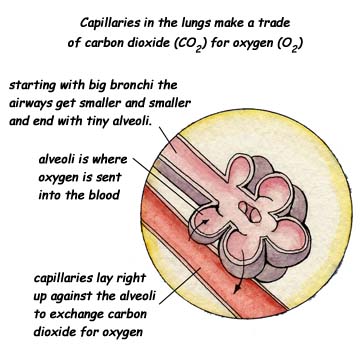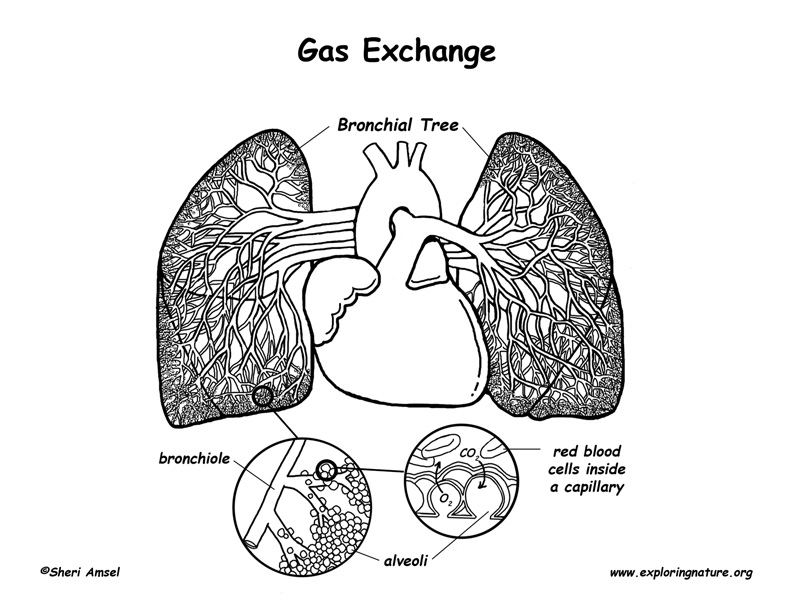

* Our Advanced Anatomy content is developed for High School and/or Introductory College Level Students.

Function: Capillaries are the smallest blood vessels in the body.Some capillaries are so small, they are just one cell thick. This makes them well suited for exchanging gases and nutrients between the blood and the body's organs and tissues. In the lungs, oxygen is passed from the capillaries into the alveoli, while carbon dioxide is passed out from the alveoli to the capillaries for disposal. In the small intestine, food nutrients, like glucose, pass from the small intestine into the capillaries. From there, they deliver the nutrients to every part of the body that needs it.
Structure: Capillaries are a dense network, branching throughout all the body’s tissues. They lay right up against organs and tissues for easy exchange of food and oxygen for wastes. They are very thin-walled with just a tunica interna. They have no muscle or connective tissue. Most tissues have a rich capillary supply - EXCEPT tendons, ligaments, cartilage, the cornea and the lens of the eye.
Capillaries are continuous or fenestrated:
1. Continuous Capillaries:
• are abundant in the skin and muscles.
• have an uninterrupted lining with tight junctions.
• make up the blood-brain barrier.
• some have some transport - pinocytosis
2. Fenestrated Capillaries:
• are made up of endothelial cell with gap junctions - are fenestrated.
• are found in areas of active absorption - small intestine, kidneys, etc.
• are also found where secretion occurs - endocrine glands, glomerular capillary beds, etc.
Capillary Beds
There are 2 types of Capillary Beds:
1. Vascular Shunt (metarteriole or thoroughfare channels) - short vessels connecting artioles and venules.
2. True Capillaries:
• Branch off thoroughfare channels or artioles
• Take part in gas and/or nutrient exchange with tissue cells
• Blood goes though true capillaries in regions of the body most needing them - i.e. the viscera after eating, the skeletal muscles after exercising, etc.
Sinusoids
• Modified capillaries that connect arterioles and venules in the liver, lymphatics and some endocrine glands.
• Often lined with phagocyte cells (spleen)
• Usually tortuous, flowing slowly to be “processed” (in the liver this is done by Kupffer Cells)
